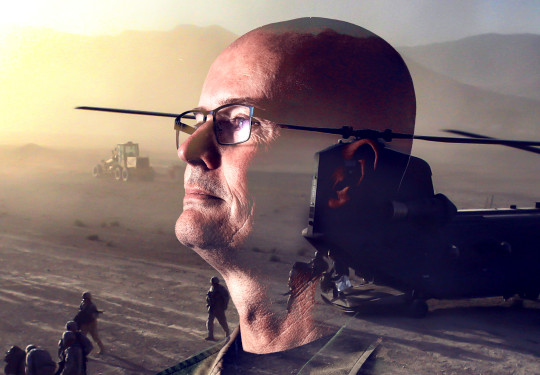Up against the clock in explosive Afghanistan operation
Flying in a Chinook helicopter at first light into hostile Afghanistan territory to destroy more than five tonnes of enemy ordnance, was something Flight Lieutenant Craig Harnett will never forget.
27 February, 2024
The mission in October 2007 was dangerous so the team was encouraged to call home to family before taking off, so long as they gave nothing away.
“I thought I’d done a good job talking to mum and making it just like a phone call to say hi and that I was okay – but after returning to New Zealand, mum said she knew we were about to do something, she picked it up.”
Operation Atash was carried out at the tail end of FLTLT Harnett’s six-month rotation as part of Crib 10. His role was as one of two Explosive Ordnance Disposal (EOD) operators embedded in the rotation.
The team had received intelligence that a large cache of Taliban ordnance was being stored in a cave near Qardendah Village and the militant group was keen to get their hands on it.
“In fact they were cutting a road into the area so they could truck all this ordnance out, so there was a rush to beat them to it.
“The task was unusual because normally we would talk with the former war lords or local dignitaries and negotiate handing over ordnance or weapons, but this was a case of we’re going in to get it.”
The New Zealand-led mission was supported by the United States military, which provided Apache gunship and Chinook helicopters.
“We had four EOD personnel from the 720th Ordnance Company helping us because of the size, location and complexity of what we were doing. We also had two Kiwi patrols providing all-round security during the operation,” FLTLT Harnett said.
“We landed near the location and were prepared for resistance to our arrival and our intentions. It was pretty terrifying when we got out of the back of the helicopter, you couldn’t see a thing with the amount of dirt and dust the Chinooks kicked up.
“We got off the ramp, moved out a bit and lay down on the ground and waited for the sky to clear so we could work out which direction was which. Thankfully there was nobody there having a go at us.”
FLTLT Harnett made his way to the cave where the cache was believed to be, but found only a couple of boxes of machine gun bullets. Worried the intelligence was wrong, he went in to the village where it was discovered the villagers had moved the cache into two of the local houses.
His fellow EOD operator, Sergeant Te Whaea Edwards, went to the second house and both teams methodically went about removing the ordnance, which included rockets and landmines.
They then hired locals and 25 of their donkeys to transport it all to a neighbouring valley for its destruction.
“We set up a corridor, loaded the donkeys up with ordnance and they travelled back and forth all day delivering the weapons where we could conduct the demolition safely without any risk to the locals or damage their buildings.”
The explosion was “massive”, FLTLT Harnett said.
“It was like one of those big dust storms you see in the movies that just blacks everything out. We heard the sound of the explosion and it just went completely dark as all the dust from the explosion drifted over us, which was pretty unnerving.”
Time was running out for the team to leave the area and it came down to literally the last few minutes for FLTLT Harnett to notify the Patrol Commander to request the helicopters return to take them back to base.
“We didn’t want to stay the night because it was an area that was unsafe. Given what we’d just done, we’d probably just upset a few people.”
The task’s execution rested on the shoulders of FLTLT Harnett and SGT Edwards who coordinated everyone involved, including the American EOD team and the land transport (donkeys).
“Knowing the time pressure we were under, it was a case of working as quickly as we possibly could but always mindful of ordnance being booby-trapped.”
Looking back, FLTLT Harnett said he’d be lying to say he wasn’t scared before the mission.
“Especially stepping off those helicopters into the unknown and the harsh reality of what we were about to do. It was quite the experience.”
This article was originally published as part of Air Force News, Issue 265 - Stories of Leadership in the Air Force(external link).
